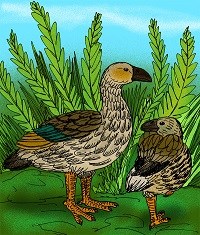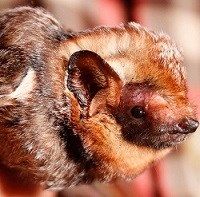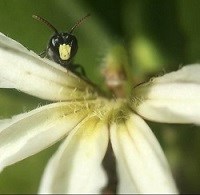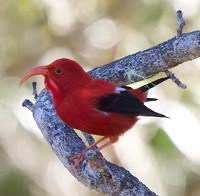
Animals and Hawai‘i’s Unique IsolationHawai‘i is the most isolated landmass on the planet, located 2,300 miles from the nearest continental land mass. This extreme isolation meant that animals and plants arrived very slowly over millions of years — only those that could survive the long, treacherous journey across the ocean made it here. Once they arrived, these species began to evolve, adapting to the island’s unique environment. Over time, they became endemic to Hawai‘i, meaning they can’t be found anywhere else in the world. In fact, Hawai‘i’s diverse range of endemic plants and animals surpasses even the famed Galapagos Islands, showcasing a stunning array of distinctive species with features unlike anything else on Earth. 
Flightless Birds of Hawai‘iOne of Hawai‘i's most unique animals was the moa-nalo, a large, flightless duck that once thrived on the islands. Although now extinct, the moa-nalo was once the primary herbivore in Hawai‘i, playing a key role in the island’s ecosystem. However, when Polynesian settlers arrived, they brought with them animals like feral pigs, which, along with human hunting, posed a threat to the moa-nalo. Having evolved in an environment with no natural predators, the moa-nalo had no fear of being hunted. Unfortunately, this made them easy targets, and they soon became extinct. 
The Hawaiian Hoary BatThe Hawaiian Hoary Bat is one of only three native mammal species still found in Hawai‘i, and it is listed as an endangered species. This small bat, once present on several Hawaiian islands including O‘ahu, is now only found on the Big Island and Kaua‘i. As one of the few remaining endemic mammals, its survival is critical to maintaining the natural biodiversity of Hawai‘i’s ecosystems. 
The Hawaiian BeeThe Hylaeus, a genus of Hawaiian bee, was once one of the most abundant insect species in Hawai‘i. However, they are now under serious threat due to habitat loss and invasive species, particularly ants. Their populations have become isolated and are now only a fraction of their former size. Efforts to protect these bees are underway, with scientists and community groups working to restore native habitats like naupaka (Scaevola sencea) and finding ways to safeguard their nesting sites from predators. Photo credit: Jason Graham, USFWS.

The ‘I‘iwiThe ‘I‘iwi (pronounced ee-EE-vee) is a striking native Hawaiian honeycreeper, known for its unique adaptation to sip nectar from specific flowers. This vibrant bird inhabits the high mountain forests and relies heavily on the nectar of the ‘Ōhi‘a tree for food. Unfortunately, the ‘I‘iwi faces serious threats from Rapid ‘Ōhi‘a Death and diseases carried by invasive mosquitoes. Once widespread across all the Hawaiian islands, the ‘I‘iwi is now mostly found on the Big Island of Hawai‘i, with its population in decline. |
Last updated: September 18, 2024
